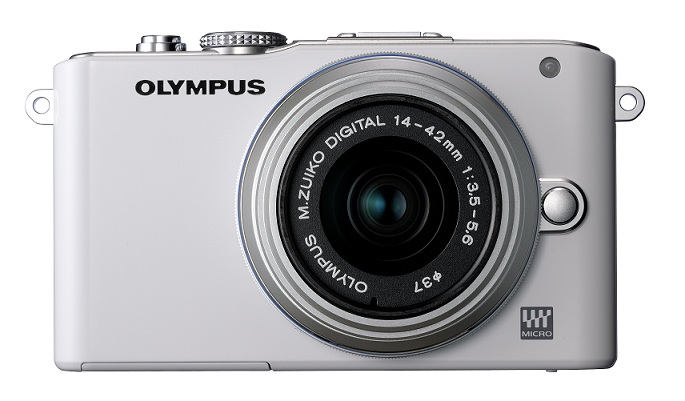Olympus PEN E-PL3 interchangeable lens compact camera to ship in September

Though it was announced last month along with two other new cameras in Olympus' PEN series of interchangeable lens compact (ILC) cameras, the Olympus PEN E-PL3 is just now getting pricing and a ship date. Olympus announced today that the E-PL3 will hit U.S. store shelves in September and will be priced at $699.99, bundled with either a 14-42mm, f/3.5-5.6 zoom lens or a 17mm f/2.8 prime lens.
The E-PL3 is a successor to the E-PL1 and E-PL2, Olympus' "PEN Lite" cameras that offer a lower-priced and easier to use interchangeable lens option for users upgrading from point-and-shoot cameras. Olympus broke new ground with the E-PL1 when it was announced in February of 2010, being the first ILC vendor to offer a lower-end model, and I actually found the E-PL2 more satisfying to shoot with than its higher-end siblings the E-P1 and E-P2, so I'm not so surprised that the E-PL3 is looking like it might be a better deal than the E-P2 and even possibly the recently announced E-P3.
With the E-PL3, Olympus appears to be further differentiating the Lite line from the high-end line in terms of overall design and feature set, while still drawing on many of the strengths of the new E-P3. Most obviously, the more compact body styling moves away from the retro look of its predecessors (and the higher-end line), and looks much more like a point-and-shoot (perhaps taking a page from Sony's NEX line of ILCs). In fact, the E-PL3 is 25 percent smaller than the E-PL2. It's also the first of the PEN line to sport a tilting LCD (a 3-inch,
460,000-dot, widescreen beauty) -- a great addition. Olympus did sacrifice the built-in flash to keep the body so compact, but bundles an external flash that mounts via the camera's accessory port. It's a convenient way to lighten your load if you don't need it, but it's kind of ironic since the inclusion of a built-in flash in the original E-PL1 was widely regarded as a reaction to criticism of the E-P1's lack of one.
Apropos to its role as a more casual and compact shooter, the E-PL3 offers faster burst-mode shooting of up to 5.5fps (compared to 3fps burst-mode in the E-P3 and the E-PL2). Like the E-PL2 before it, the E-PL3 only offers six art filters (Pop Art, Soft Focus, Grainy Film, Pin Hole, Diorama, and Dramatic Tone) while the E-P3 adds four others to the mix (Pale & Color, Light Tone, Gentle Sepia, and Cross Process).
Still, the E-PL3 has been upgraded with several specs that are closer to the E-P3's than the E-PL2. For instance, the faster autofocus system offers 35 focus points like the E-P3 (vs. 11 for the E-PL2), and the sensitivity range has been boosted up to ISO 12,800 like the E-P3 (vs. 6,400 in the E-PL2). Likewise, the E-PL3 matches the E-P3's 1080i AVCHD video recording capabilities, besting the E-PL2's 720p AVI Motion JPEG.
Unfortunately, all the high-end features come at a price: The E-PL3 camera kit has been bumped up to $699.99 (whereas the E-PL1 and E-PL2 were both priced at $599.99 when they launched). Still, even at a $100 premium, it's a pretty compelling camera and I'm not convinced the higher-end E-P3 is a better deal at $899.99. With the E-PL3 packing such a punch, and being smaller and sporting the tilting screen to boot (though the E-P3's is a higher-resolution model with touchscreen capabilities), it's arguably the better camera to snap up.
Related stories on ZDNet:
- Olympus announces new top-of-the-line PEN E-P3 interchangeable lens compact camera
- Sony Alpha NEX-C3 with APS-C sized sensor is coming this August
- Pentax Q: Smallest compact interchangeable lens camera sports biggest price tag
- Panasonic’s new Lumix DMC-GF3 interchangeable lens camera is compact and curvy
- Olympus announces new E-P2 compact interchangeable lens camera
- Olympus announces new PEN E-PL2 Micro Four Thirds interchangeable lens camera
Related links:
